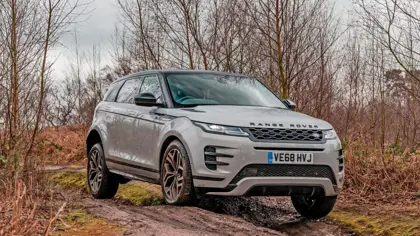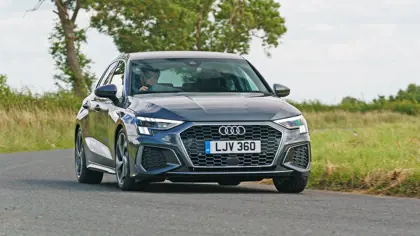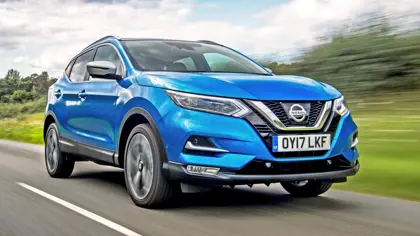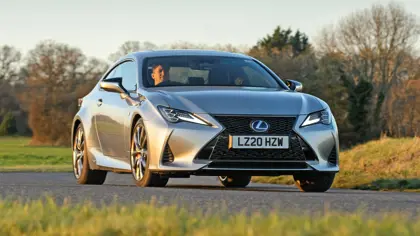Automatic vs manual gearboxes: which is best?
Get to know your DCT from your CVT: read on to understand whether an automatic or manual gearbox is best for you

In the past, manual gearboxes tended to be the most common transmission used in cars in the UK. In many other countries around the world, such as the US, automatics have always been the more popular choice.
Recently, however, automatic gearboxes have become more popular in the UK, now making up a higher percentage of car sales than the manual option. The difference tends to come down to personal preference - some drivers prefer a less involved style of driving which allows them to sit back and allow the car to do the work.
It used to be argued that the effect an automatic transmission had on performance and economy was detrimental, but in modern times, this is no longer an issue. Some of the best automatic gearboxes can change gear quicker than a manual, in fact, and they tend to be just as economical.
The debate around which is best has raged on for decades; Manual purists will argue they have much more control over their car which is crucial for driving enjoyment, whilst automatic drivers will vouch for how easy it is driving in heavy traffic, when you don’t have the pesky clutch wearing out your left leg. Here are the advantages and disadvantages of manuals and automatics, so you can make up your own mind.
What is a manual gearbox?

A manual gearbox allows you to select gears using the gearstick and a foot-operated clutch, which separates the engine from the gearbox to avoid the gears grinding when you change them.
This gives you complete control over the gears you use and when you select them, so the car will only ever react to your input, which is useful when it comes to acceleration and deceleration, especially if you're trying to drive smoothly and economically.
With practice, you can learn to be in the right gear for the speed the car is travelling at, so saving fuel, and reducing wear and tear on the engine and the car’s mechanicals. A manual gearbox is also a relatively simple device that rarely causes any issues. It’s also cheaper to make which is why manual cars are generally less expensive than automatics when they're brand new.
A car with a manual gearbox does open the door to human error though. If you mistime your movements it's easy to crunch the gears, which can cause damage to either the clutch, the gears or the engine itself if done repeatedly. Operating a manual gearbox is just one more thing to think about. For the same reason, the clutch will eventually wear out too, which can be expensive to replace.
What is an automatic gearbox?

Generally the term ‘automatic gearbox’ refers to a design that uses a complicated arrangement of mechanical parts to change gear without any driver input.
If you want more acceleration, you can push your throttle pedal to the floor and the gearbox will change down a gear to give you more performance. On the most simple level, an automatic gearbox will save you the trouble of changing gear yourself. Because there’s no clutch pedal you can rest your left foot and use your right to brake or accelerate.
Besides that, if you want to get a move on, an automatic will launch itself from the traffic lights quickly because drive is instant and less momentum is lost between gear changes. Also, some cars will have a Sport mode that makes the gearbox more responsive. Many automatic cars will also feature a manual mode, which allows the driver to change gear shift levers or ‘paddles’ behind the steering wheel, so you can gain back some of the lost control.
Some automatic gearboxes can be inefficient and reduce fuel economy if you drive in a particular way. By design, an automatic gearbox will only change gear when it believes it's ready, so you might end up revving the engine much more than intended under hard acceleration.
They're complex, too, and can be expensive to repair. It's also very easy to forget what kind of gearbox you have if you've recently made the change from a manual car. You may find yourself reaching for a clutch pedal that isn't there and inadvertently hitting the brake pedal, which can cause some pretty harsh and unintended braking.
Hydraulic automatic gearbox
This type of automatic gearbox has been used for decades and uses what's called a torque converter to operate.
These gearboxes shift smoothly and you can barely tell when they move from one gear to another in the very best - such as those used in Jaguars and Land Rovers.
Hydraulic automatics can be inefficient, increasing fuel consumption. It can also be slow to react when you want to accelerate and need it to change to a lower gear.
Dual-clutch transmission (DCT)
Also called an automatic, this type of gearbox is a popular fitment on Volkswagen Group vehicles where it’s called DSG or, for Audi, S tronic. It uses two conventional clutches to engage and disengage drive while selecting the gears, all of it automatically.
Some systems have as many as seven forward gears. You can select different performance modes to change the way the ’box operates and, like a hydraulic automatic, change gears using the shift lever or on sporty models, steering wheel paddles.
Don't let the term dual-clutch fool you though, there's still no clutch pedal involved here. Changes are much faster than a manual. Because it’s a mechanical rather than hydraulic system, it’s more efficient. Not only that, because changes are controlled by a computer, the gearbox is always in the optimum gear, which also increases efficiency and saves fuel.
Because it’s mechanical rather than hydraulic, a DCT isn't as smooth as a traditional automatic gearbox. It can be slow to engage first gear, too, resulting in a jerky start. They are very complex and there have been reliability issues in the past.
Semi-automatic or automated-manual transmission
This type of automatic gearbox uses sensors and actuators to operate a clutch. It’s a popular fitment on Peugeot and Citroen cars where it’s called the Efficient Tronic Gearbox, or ETG for short. It relies on highly complex electronics to function but its advocates claim it feels more direct than even a DCT system while delivering similar levels of fuel economy. Like other automatics, it can be manually operated using the shift lever or steering wheel paddles.
There’s no clutch pedal with a semi-automatic either, so you can rest your left foot, but you can use it just like a manual gearbox with a pair of paddles that are usually placed behind the steering wheel. It an efficient system that can help to save fuel.
They can be very complex though, and changes can be jerky because the system takes its time to select the next gear. They’re rare, too.
Continuously variable transmission (CVT)
This system uses two moving cones and a rubber belt riding over them to achieve a kind of infinitely changing gear ratio, it’s quite simple but not very widely used currently. That said, it’s becoming more common in hybrid cars.
It’s efficient, a car with a CVT gearbox is often just as economical as one with a manual. For example, the Nissan Qashqai 1.2 DIG-T 115PS manual and Xtronic CVT each do 50.4mpg. A CVT is easy to drive because there’s no clutch pedal to operate.
A CVT isn't as responsive as a DCT gearbox. Because of the way it operates, it sounds like it’s stuck in the same gear with the engine just getting noisier. This can be tiring on long journeys.












